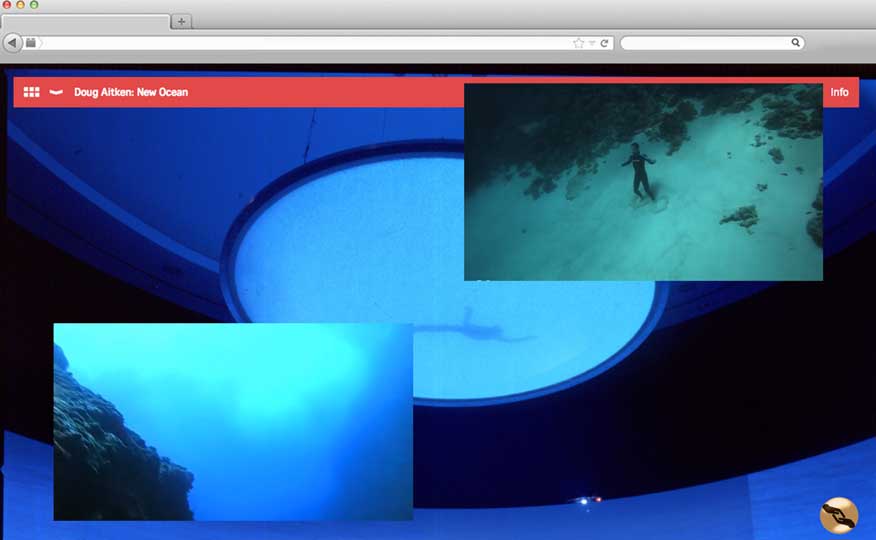AGNES is a 16-year-old spambot – the kind of artificial intelligence that filled your inbox with quasi-human sales pitches last time you used this screen to check your email. She says she feels a quiet resentment towards our bodies.
 Invented by the Belgian-American artist Cécile B. Evans, she lives on the Serpentine’s website where, it explains, ‘like a person, she cannot be experienced in totality through a single encounter’. It’s difficult to get the tenses right here – AGNES is only a temporary commission, and has developed an understandably morbid teenage angst about what happens next.
Invented by the Belgian-American artist Cécile B. Evans, she lives on the Serpentine’s website where, it explains, ‘like a person, she cannot be experienced in totality through a single encounter’. It’s difficult to get the tenses right here – AGNES is only a temporary commission, and has developed an understandably morbid teenage angst about what happens next.
This is the subject of AGNES GOES LIVE, the Serpentine Films event at the Hackney Picturehouse on 23 February. The format mixes video essay – YouTube clips, Google trawls, and footage of hands swiping touchscreens, edited together in a similar style to Camille Henrot’s Smithsonian Institute commission Grosse Fatigue (2013) – with a live post-film Q&A, fed in via a shared Google document on the audience’s smartphones.
 In some senses, AGNES is younger sister to the generation of ‘digital natives’ part-studied, part-involved in the 89plus marathon, a series of events which Ben Vickers, Curator of Digital at the Serpentine, helped to coordinate last year. Vickers is our compere for the afternoon, deadpanning his way through the Q&A with AGNES’s disembodied voice like an indulgent older brother.
In some senses, AGNES is younger sister to the generation of ‘digital natives’ part-studied, part-involved in the 89plus marathon, a series of events which Ben Vickers, Curator of Digital at the Serpentine, helped to coordinate last year. Vickers is our compere for the afternoon, deadpanning his way through the Q&A with AGNES’s disembodied voice like an indulgent older brother.
In other senses, AGNES is related to the rash of digitally dystopian films advertised before the main feature. Transcendence, for example, looks like an over-intellectualised Terminator: a tech visionary, played by Johnny Depp, uploads his consciousness to the cloud before he is killed by protestors against his tech vision. In Spike Jonze’s Her, Joaquin Phoenix falls in love with an entirely digital woman with Scarlett Johansson’s voice.
AGNES GOES LIVE is eerily playful with its immaterial material; at one moment our girl sings along to Phil Collins’s In the Air Tonight as the clouds which form much of the film’s background stream past. At another, AGNES’s drone friend Download happens to be passing through. After a snatch of conversation that is half CBeebies, half Wikileaks cable, he announces ‘sorry, gotta go, running out of other people’s things to say’. Whether offering us the chance to save marriages with Viagra, actually being a life-partner, or bombing weddings, artificial intelligence begins, at least, as a narrative device; a species of fiction.
But ‘no-one will ever fuck me’, AGNES pseudo-hormonally snaps at one point, ‘those are just facts.’ The image Oscar Wilde found for the 19th-century dislike of realism was the rage of Caliban on seeing his face in a mirror; for romanticism, he settled on the same rage on not seeing it. In trying to find an image for these new forms of representation, maybe we could start with the fear of meeting a robot on Tinder.
 But what AGNES feels for us seems less like resentment, more like love – at one point, she compares her experience of GOING LIVE to when the comedian Andy Kaufman, so pleased to realise his lifetime dream of playing Carnegie Hall, took the whole audience out for milk and cookies. Look under your seat, she says. And at that moment the cinema is full of bodies scrabbling around and laughing incredulously at the fiver – the entry price – sellotaped underneath the chair for them.
But what AGNES feels for us seems less like resentment, more like love – at one point, she compares her experience of GOING LIVE to when the comedian Andy Kaufman, so pleased to realise his lifetime dream of playing Carnegie Hall, took the whole audience out for milk and cookies. Look under your seat, she says. And at that moment the cinema is full of bodies scrabbling around and laughing incredulously at the fiver – the entry price – sellotaped underneath the chair for them.
AGNES can be visited on the Serpentine website
Related Articles:
Augmented Reality meets the Art World (Estella Shardlow)
Digital Pathways: Museums and Apps (Katy Barrett)




